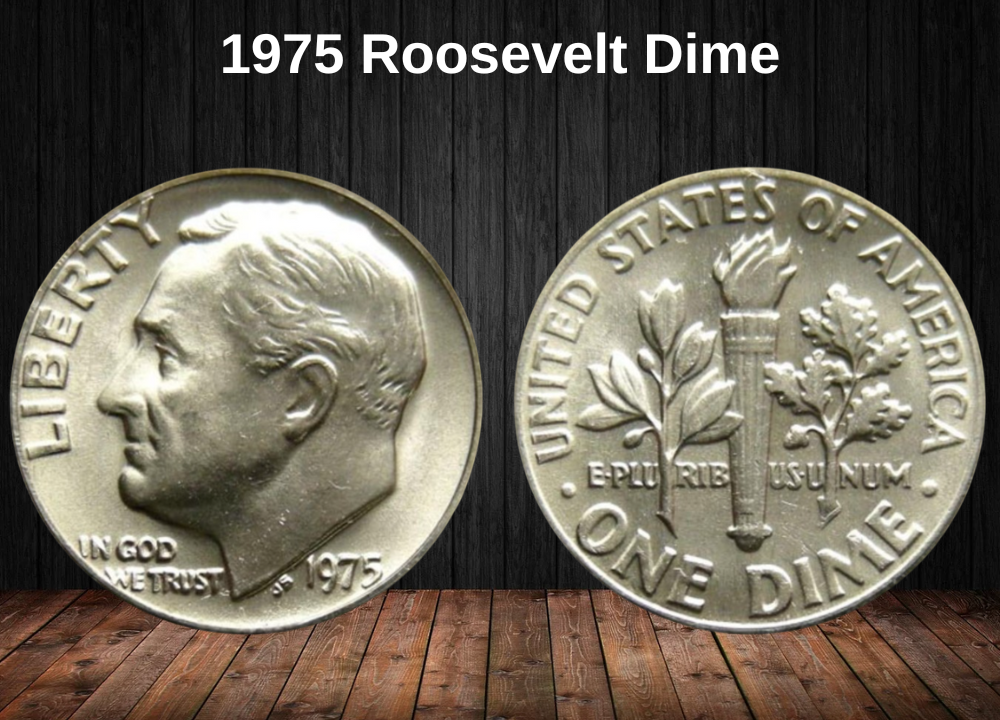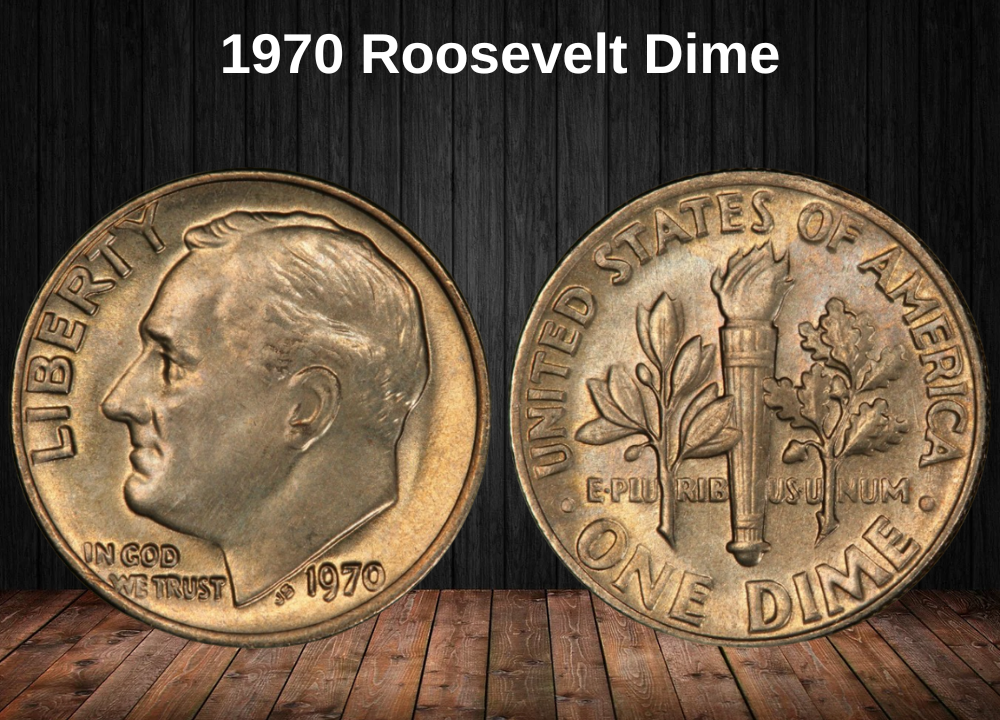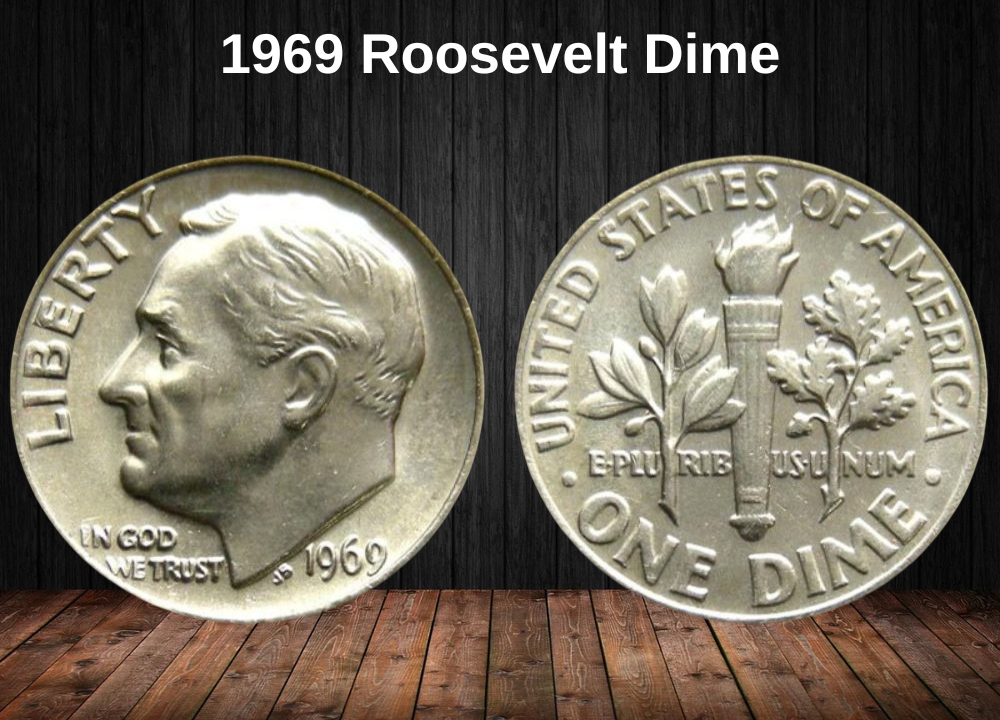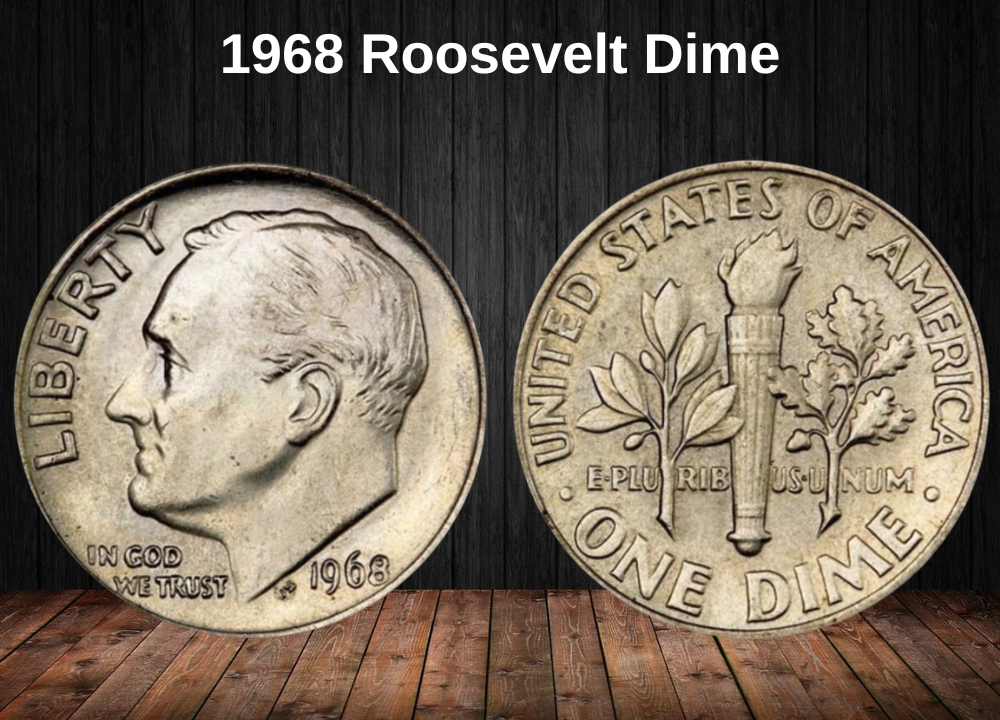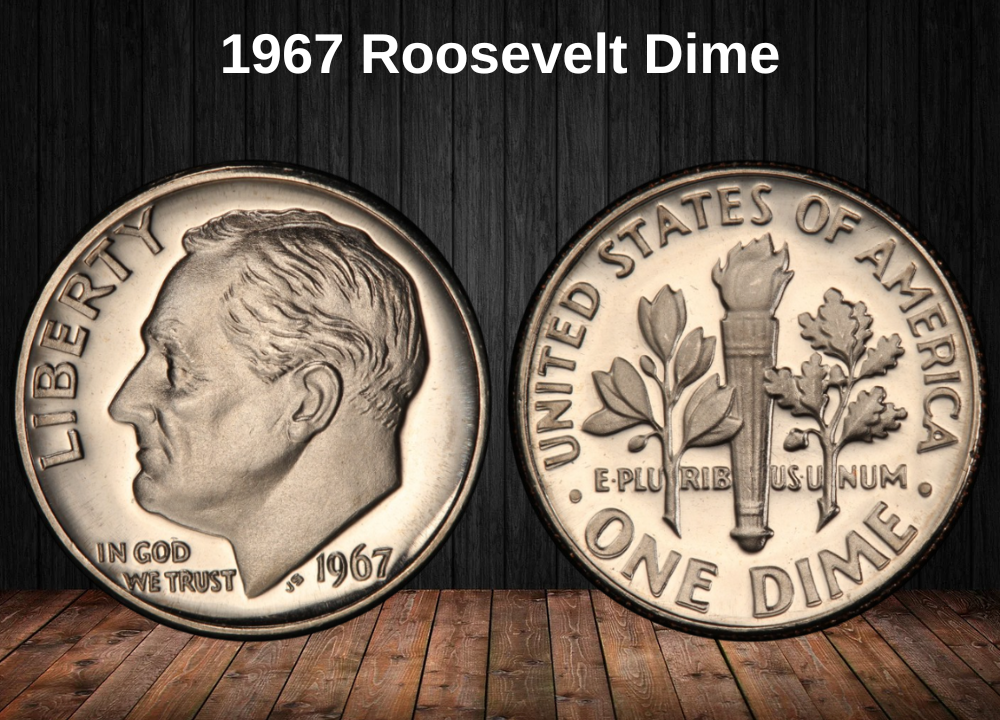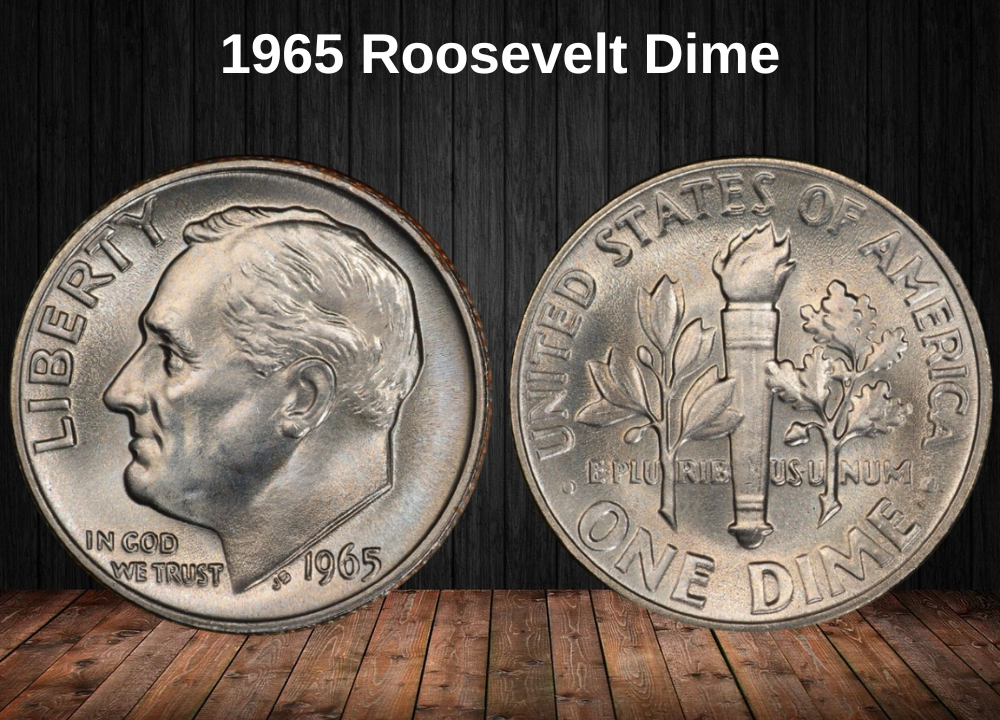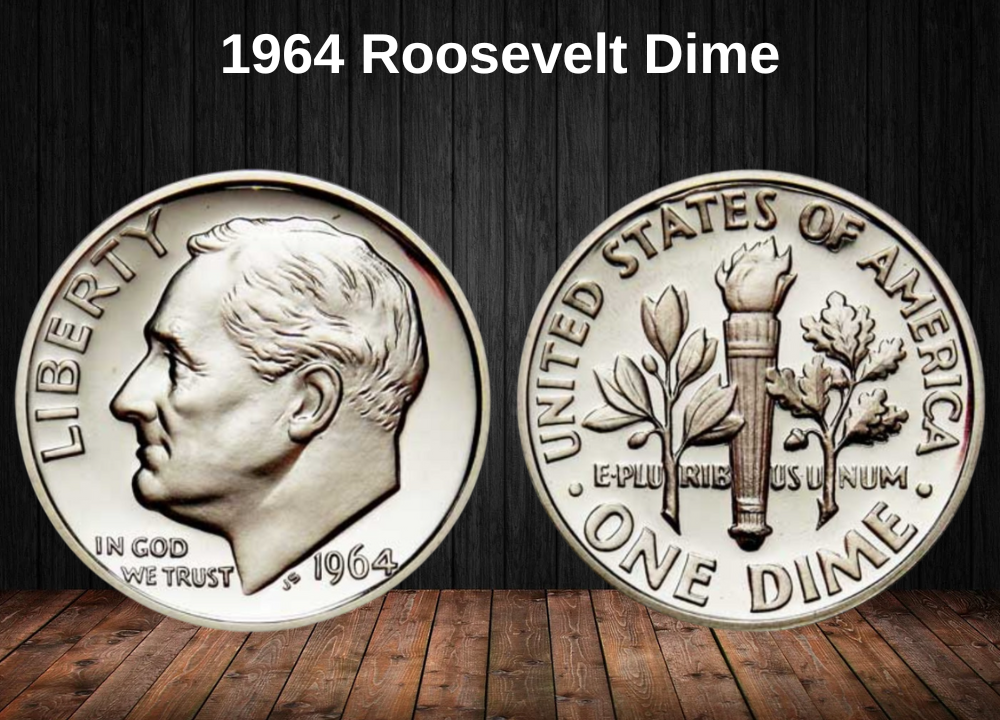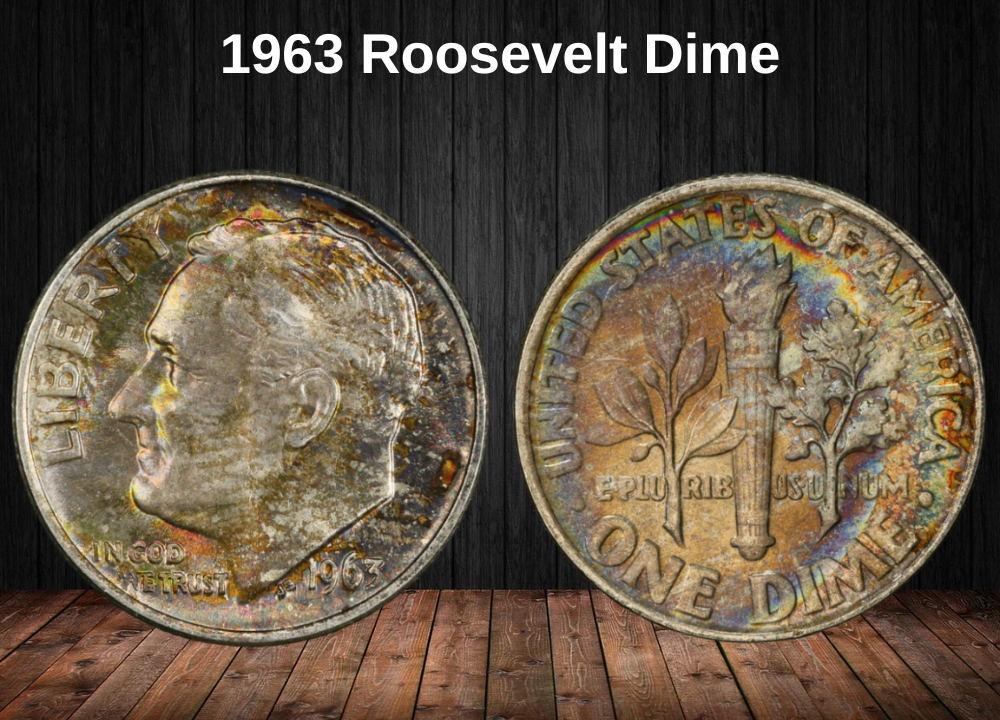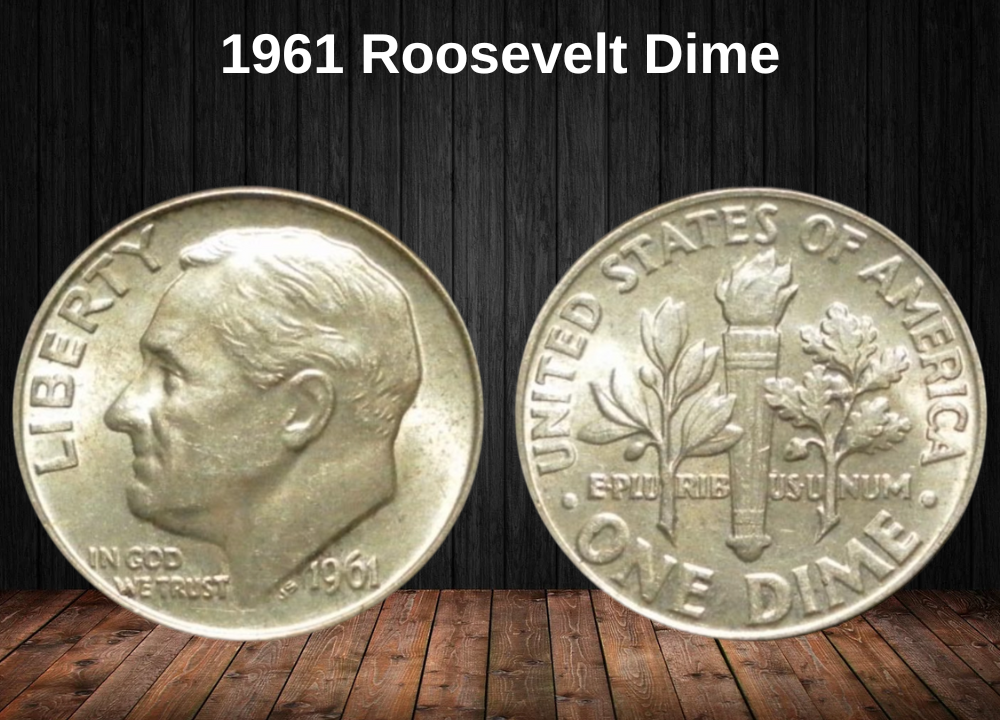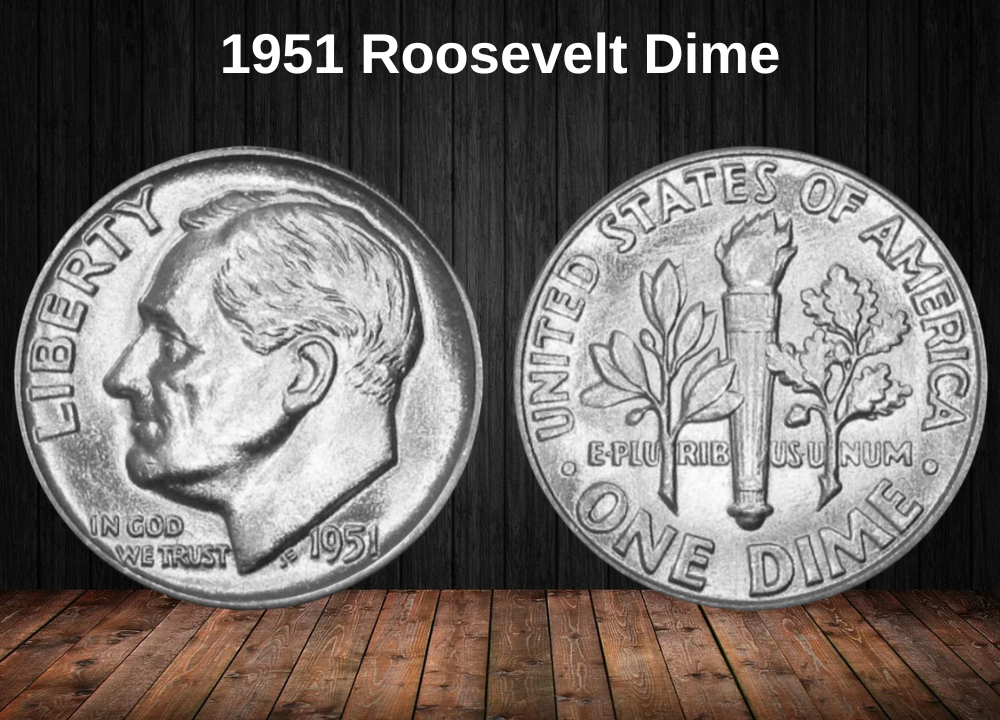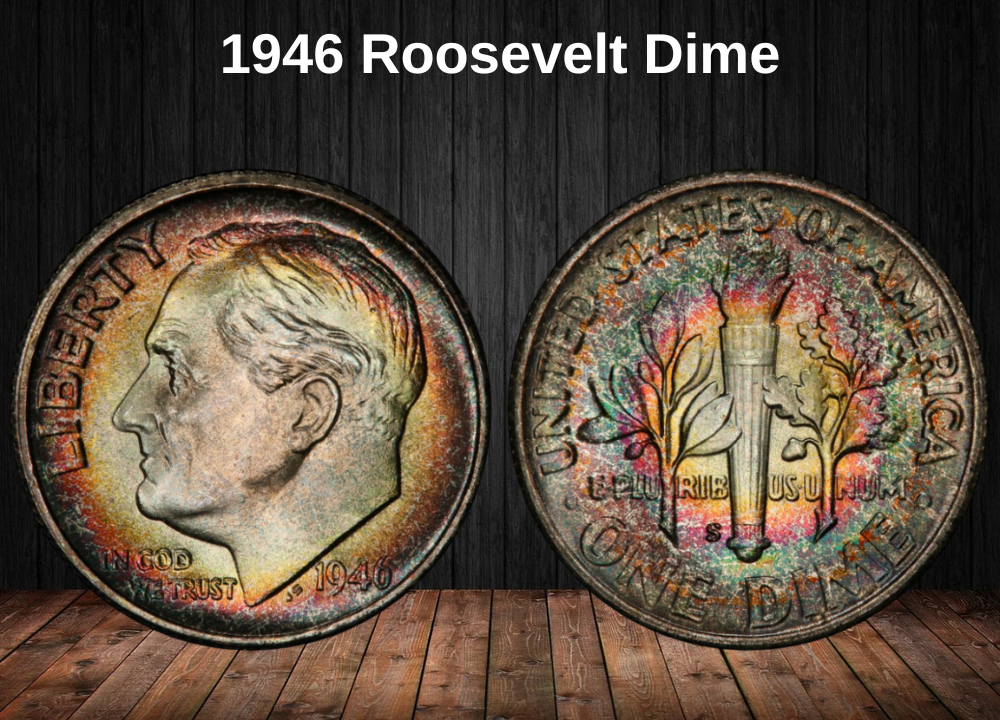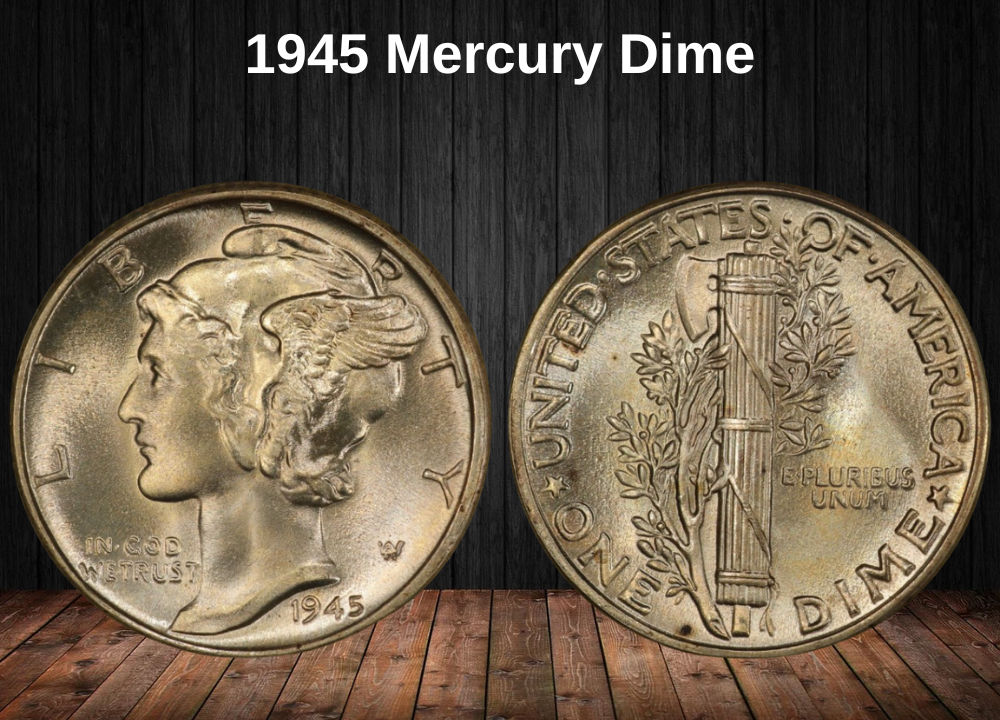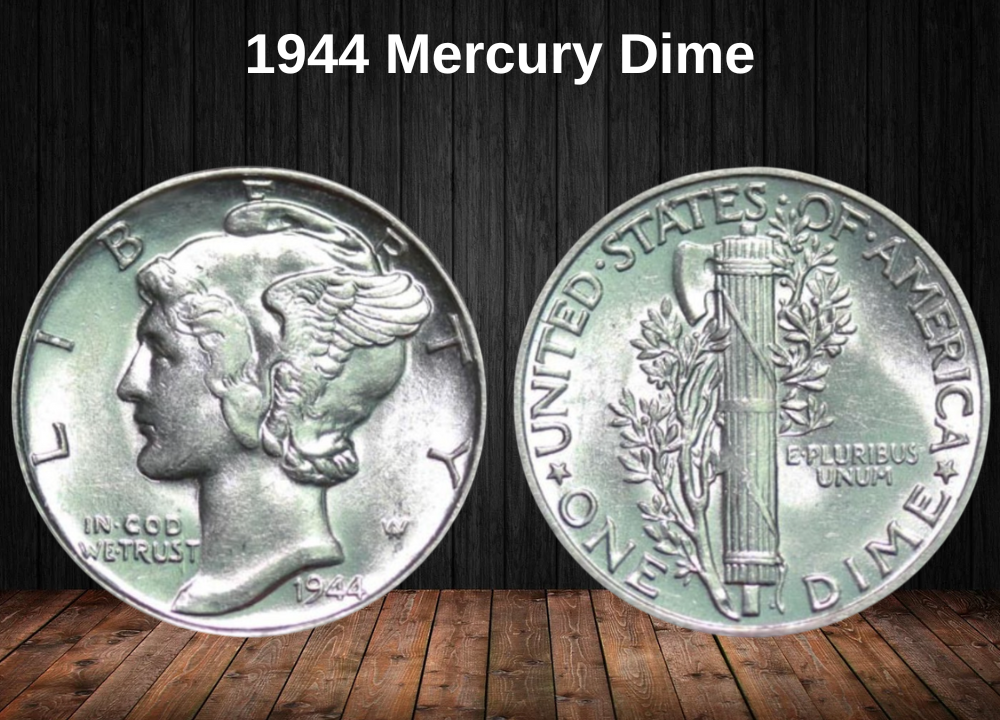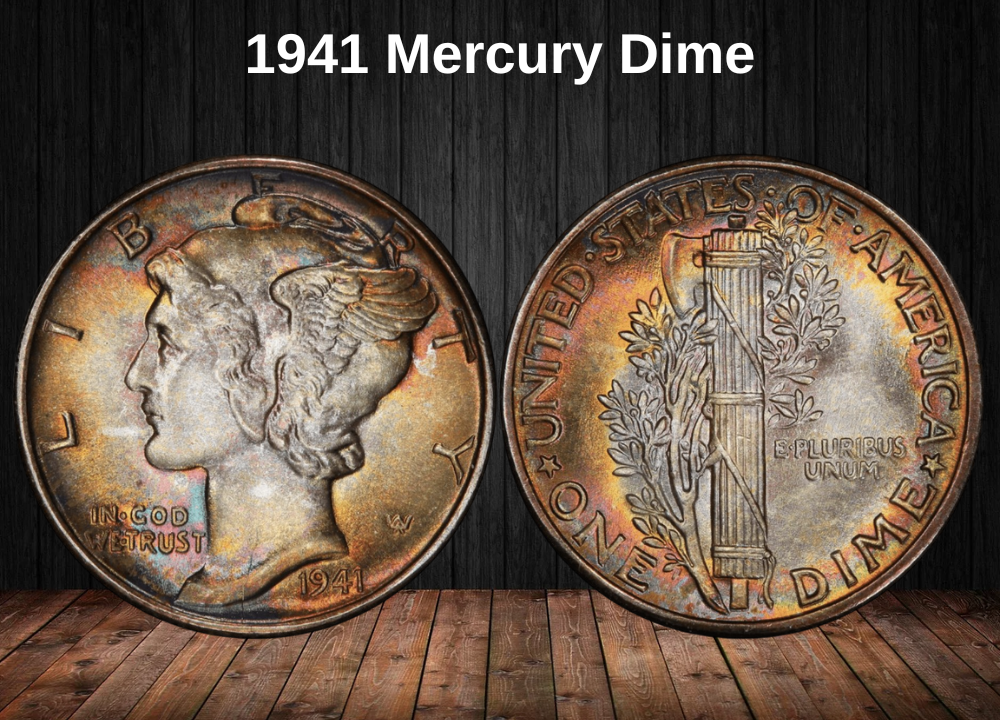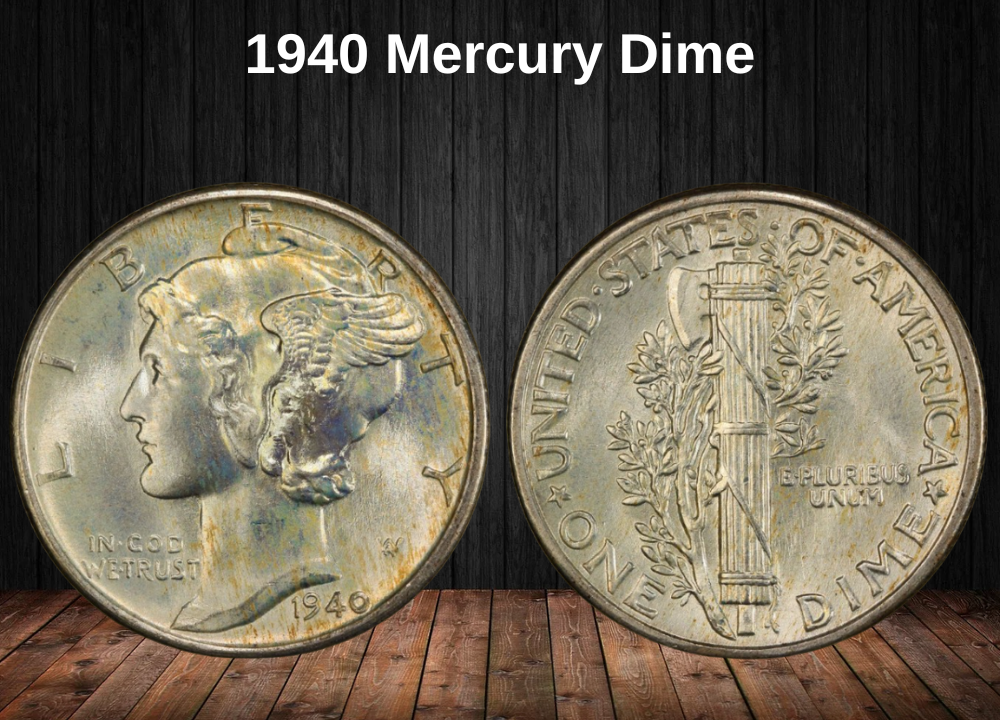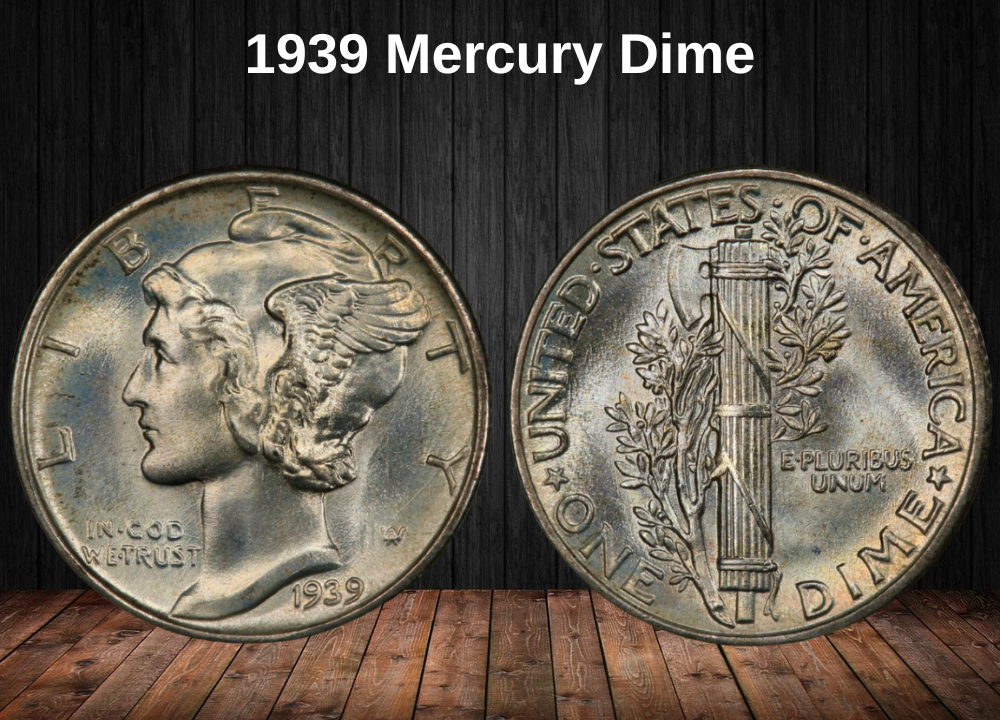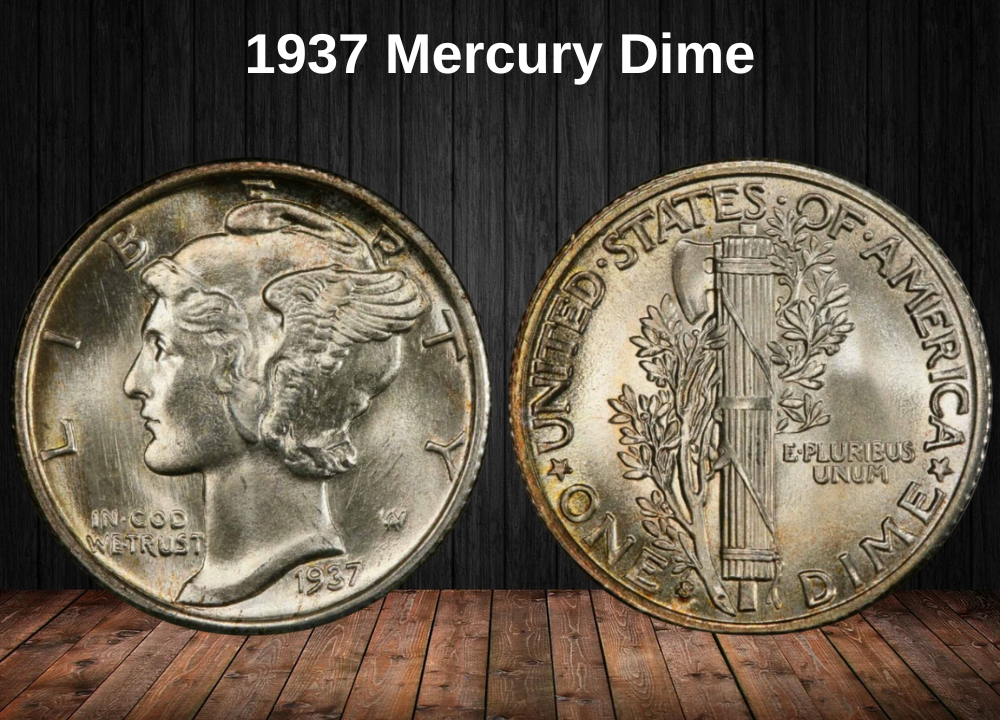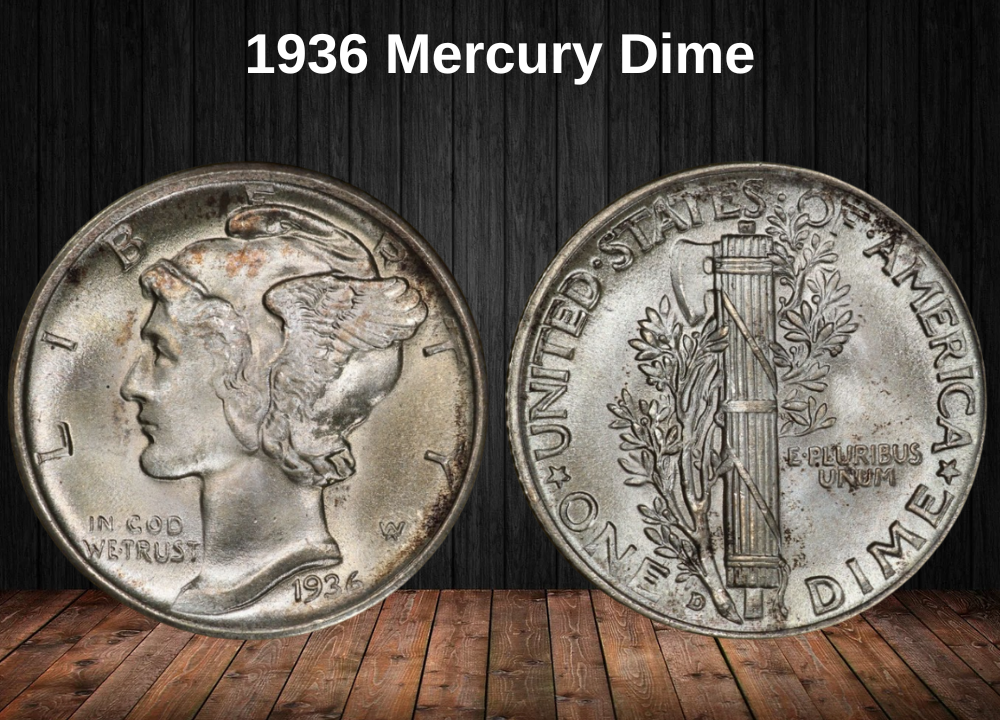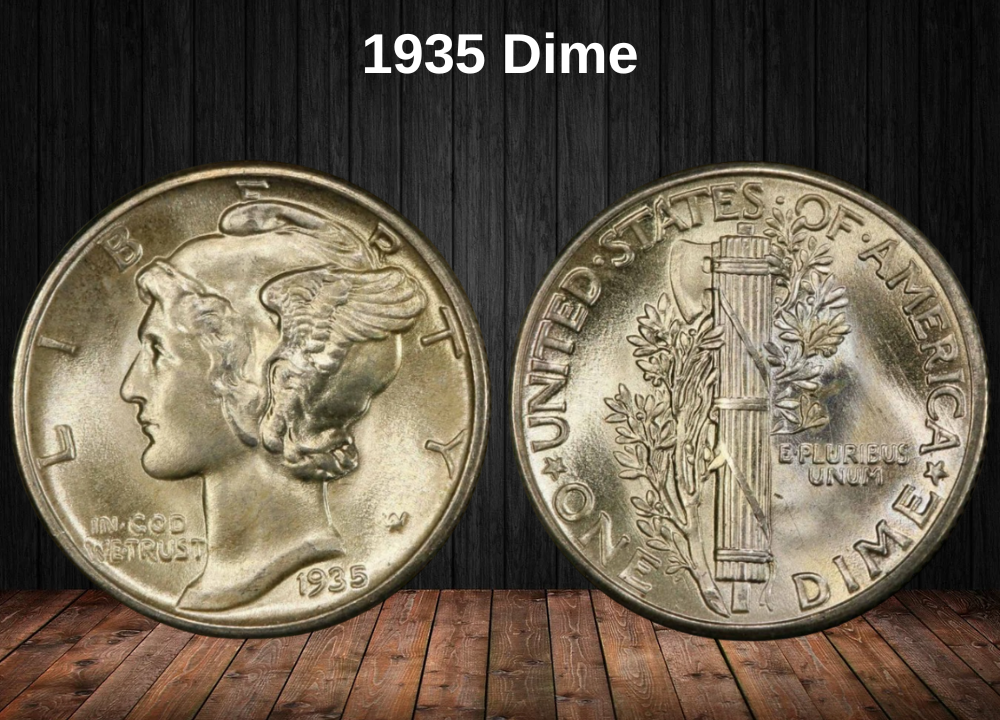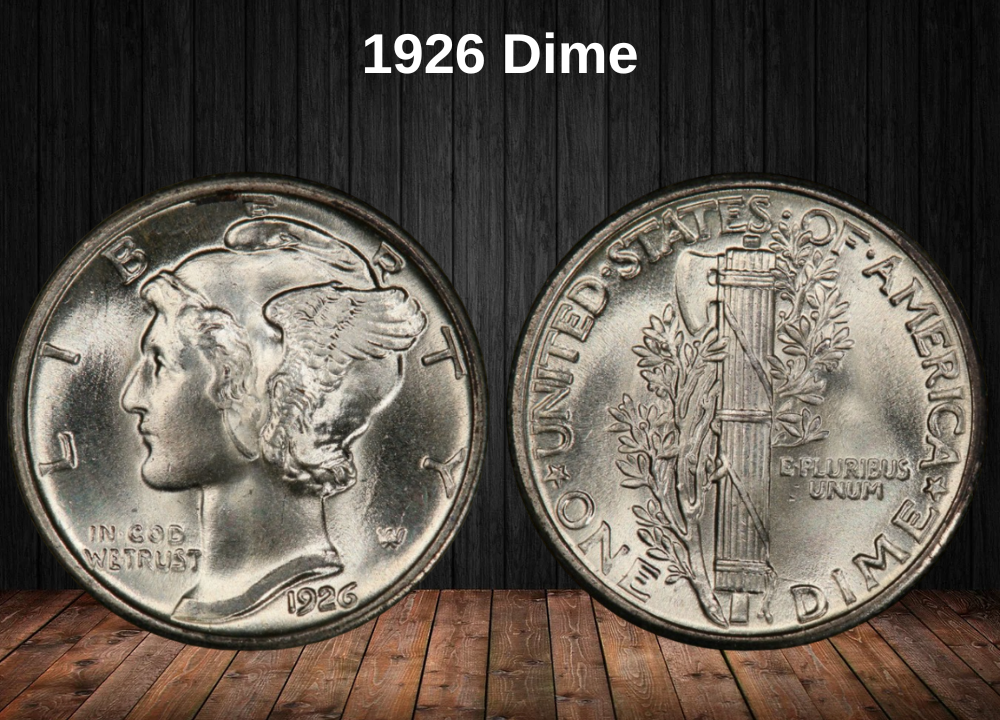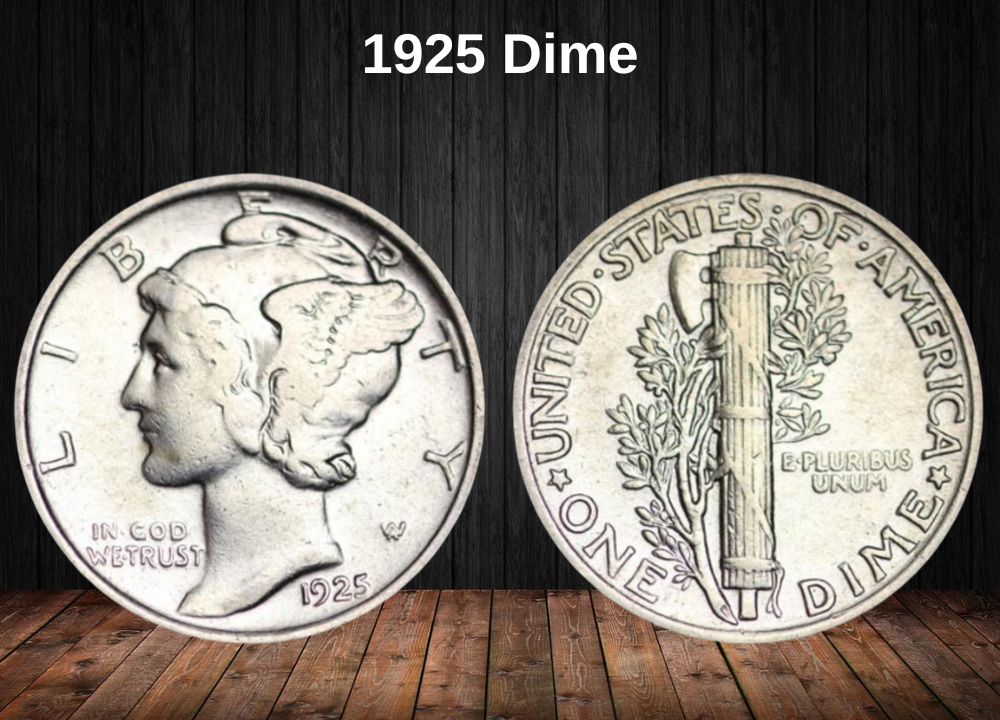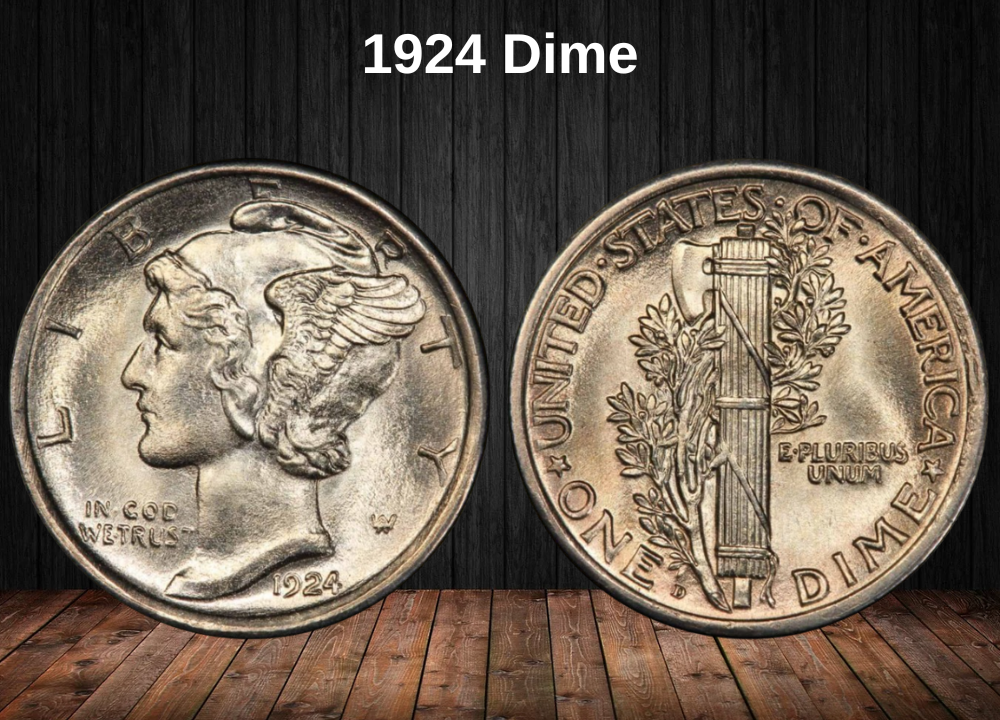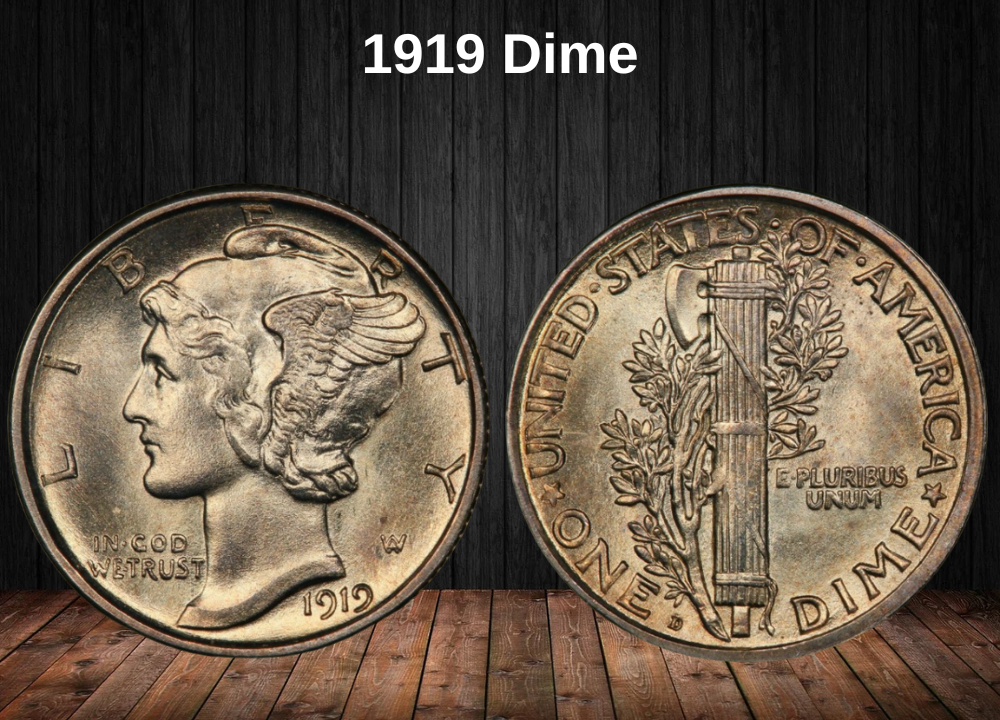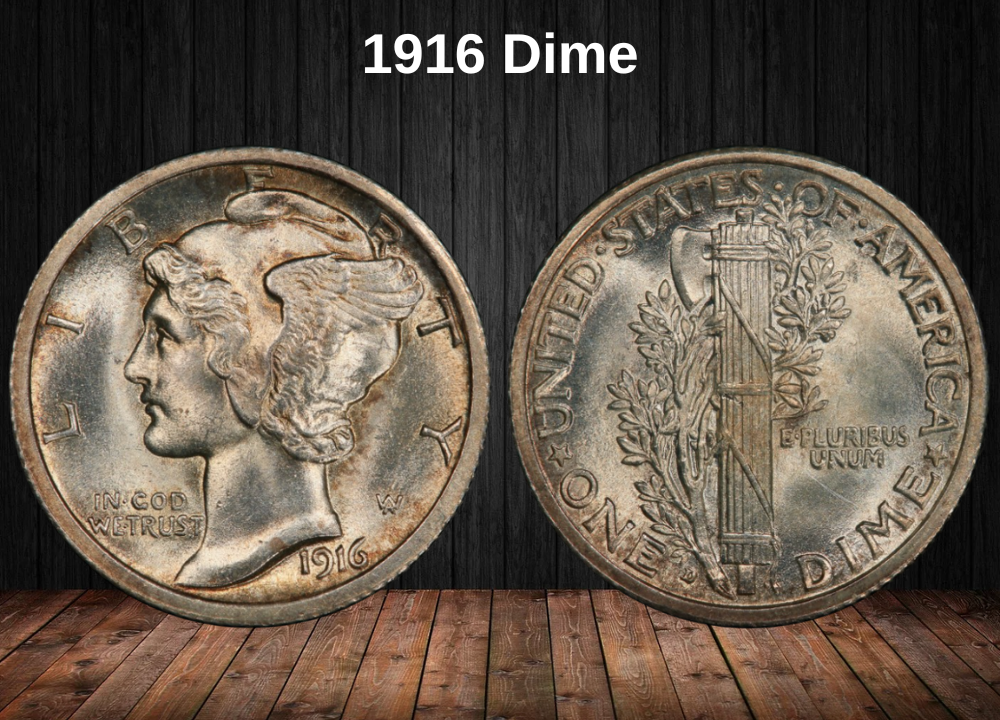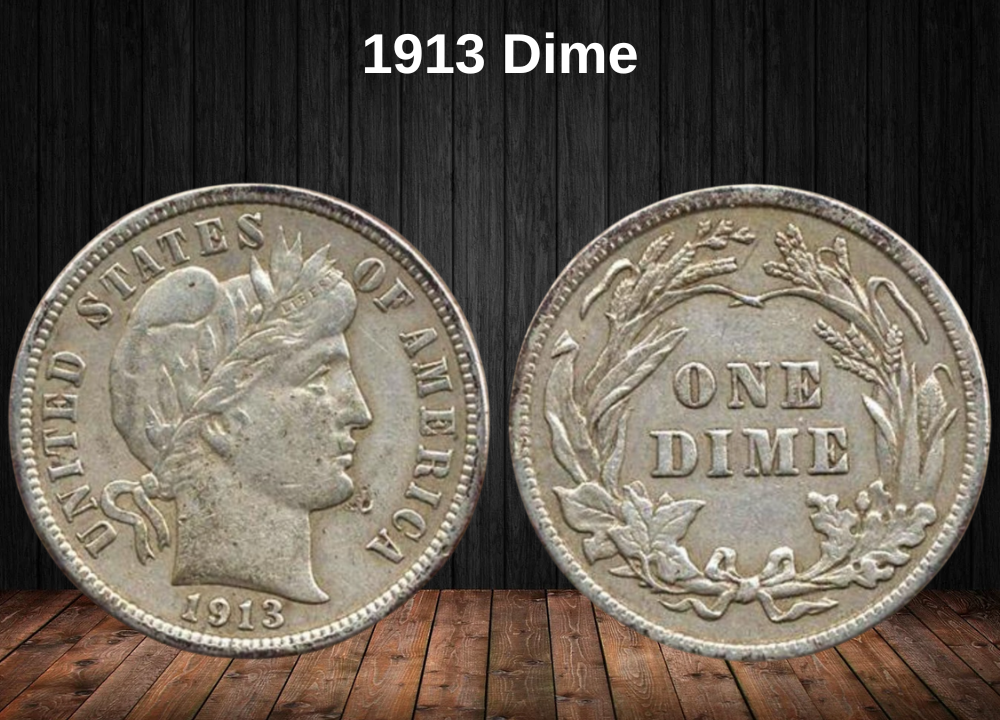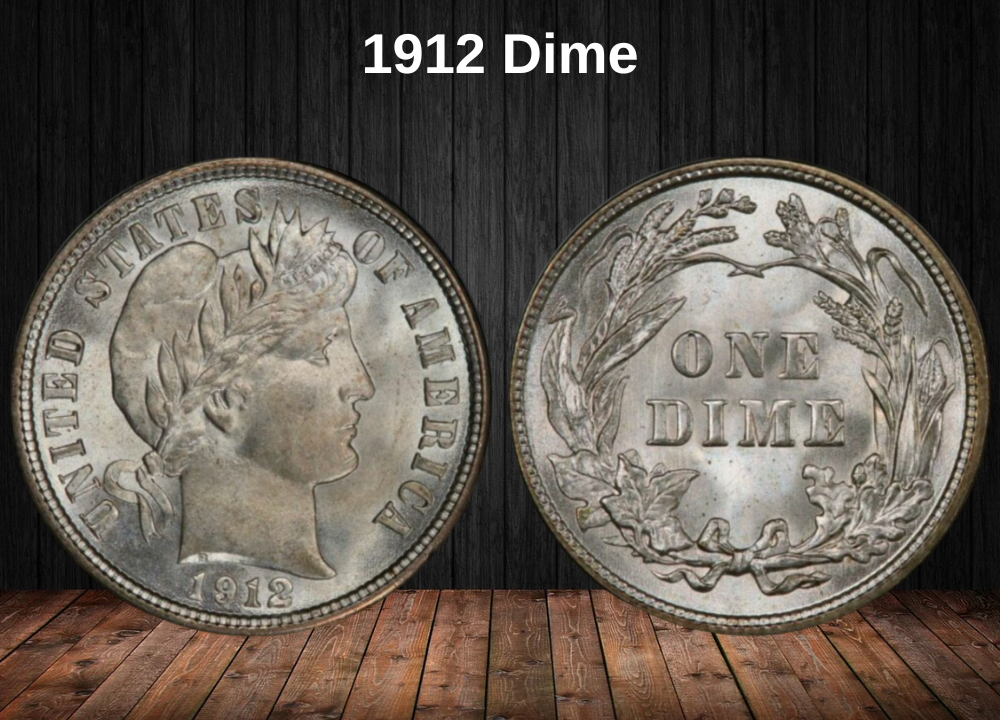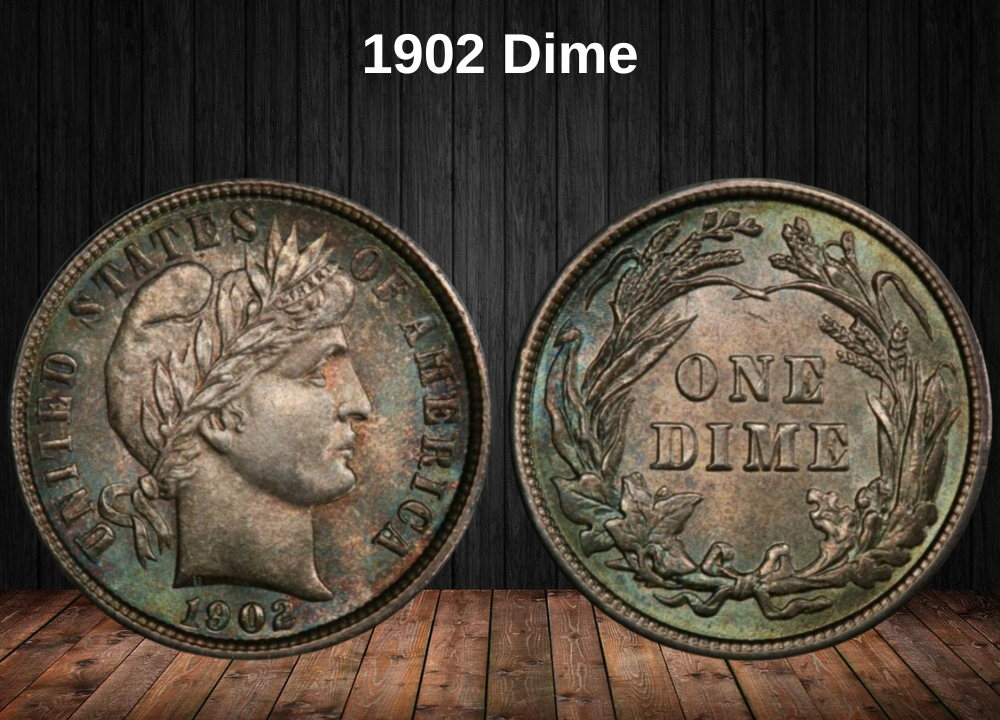The 1976 Roosevelt Dime continued the long-running design by John R. Sinnock, honoring President Franklin D. Roosevelt for his efforts in founding the March of Dimes. This foundation was dedicated to fighting polio and improving child health across the United States.
By 1976, Roosevelt dimes had been in circulation for exactly 30 years, and the Mint was producing them in copper-nickel clad (no silver) as part of the standard circulation coinage. While common in most grades, certain mint errors and proof varieties make some 1976 dimes highly collectible.
1976 Dime Value Chart
| Condition | 1976 No Mint Mark (Philadelphia) | 1976 D (Denver) | 1976 S (San Francisco Proof) |
|---|---|---|---|
| MS65 | $7 | $7 | — |
| PR65 | — | — | $7 |
History of the 1976 Roosevelt Dime

The American dime has a long history that dates back to 1796, when the first ten-cent pieces entered circulation. The word “dime” itself comes from the French word disme, meaning “tenth part.” Since then, the U.S. Mint has produced several dime series: Draped Bust, Capped Bust, Seated Liberty, Barber, Mercury, and finally, the Roosevelt dime, first struck in 1946.
For the first twenty years, Roosevelt dimes were minted in 90% silver and 10% copper, reflecting the traditional composition of U.S. coinage. But rising silver prices and widespread hoarding in the early 1960s forced a change. The Coinage Act of 1965 replaced silver with a copper core clad in cupronickel, the same composition still used in circulation dimes today.
What makes the Roosevelt dime remarkable is the stability of its design. While many U.S. coins have undergone redesigns or commemorative changes, Sinnock’s portrait of Franklin D. Roosevelt has remained virtually unchanged since its introduction — a true testament to its acceptance and symbolic power.
1976 Mintage Figures
| Location | Variety | Mintage |
|---|---|---|
| Philadelphia | 1976 No Mint Mark Dime | 568,760,000 |
| Denver | 1976 D Dime | 695,222,774 |
| San Francisco | 1976 S Proof Dime | 4,149,730 |
| Total | — | 1,268,132,504 |
Why Roosevelt on the Dime?
President Franklin Delano Roosevelt (1933–1945) is remembered for guiding the U.S. through the Great Depression and most of World War II, serving an unprecedented four terms. However, his portrait on the dime was chosen not to celebrate his wartime leadership, but to honor his lifelong fight against polio.
Roosevelt, himself afflicted with the disease, founded and supported the March of Dimes, a national campaign that raised funds for polio research and assistance. His association with the dime made this coin a fitting tribute after his death in 1945.
Despite opposition from some politicians and historians who argued that Roosevelt should not be ranked among America’s greatest leaders on coinage, the U.S. Mint went forward. The first Roosevelt dimes were struck on January 30, 1946, his birthday, and the design has endured ever since — making the 1976 issue part of a now 30-year legacy at the time.
Features of the 1976 Roosevelt Dime
The Roosevelt dime, designed by John R. Sinnock, entered circulation in 1946, just months after President Franklin D. Roosevelt’s passing. By 1976, these coins had already been in use for three decades, maintaining the same enduring design that collectors still recognize today.
Interestingly, despite being minted during the nation’s Bicentennial year, the 1976 Roosevelt dime was not given a special dual-date or commemorative reverse like the quarter, half dollar, and dollar. Instead, the dime retained its familiar design — a fact that makes it unique among 1976 U.S. coinage.
Obverse Design
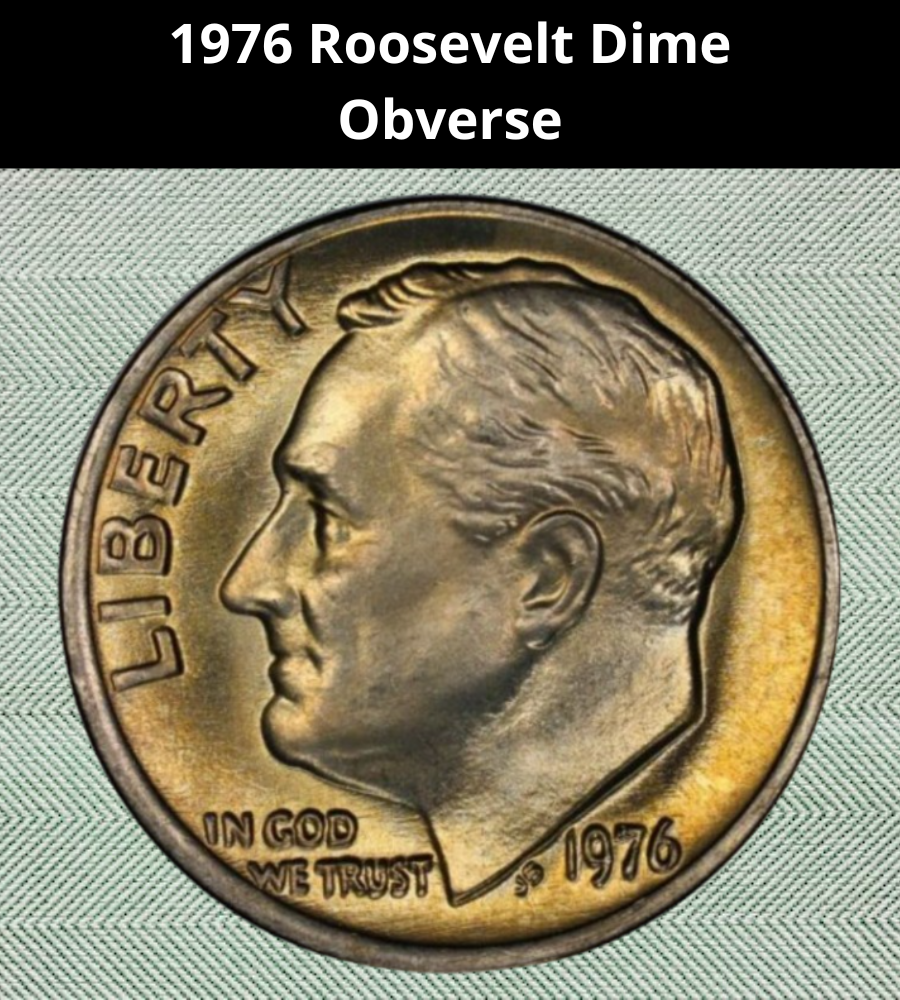
The obverse features a left-facing portrait of Franklin D. Roosevelt, the 32nd U.S. President. Sinnock captured Roosevelt’s characteristic facial lines and hair texture with sharp detail, reflecting strength and dignity.
Inscriptions are minimal, as required by law:
- LIBERTY appears prominently on the left.
- IN GOD WE TRUST is placed beneath Roosevelt’s chin.
- The date, 1976, sits on the right.
- Just above the date are the designer’s initials, JS.
- Mint marks (D for Denver or S for San Francisco) appear above the date. Philadelphia coins bore no mintmark until 1980.
Reverse Design
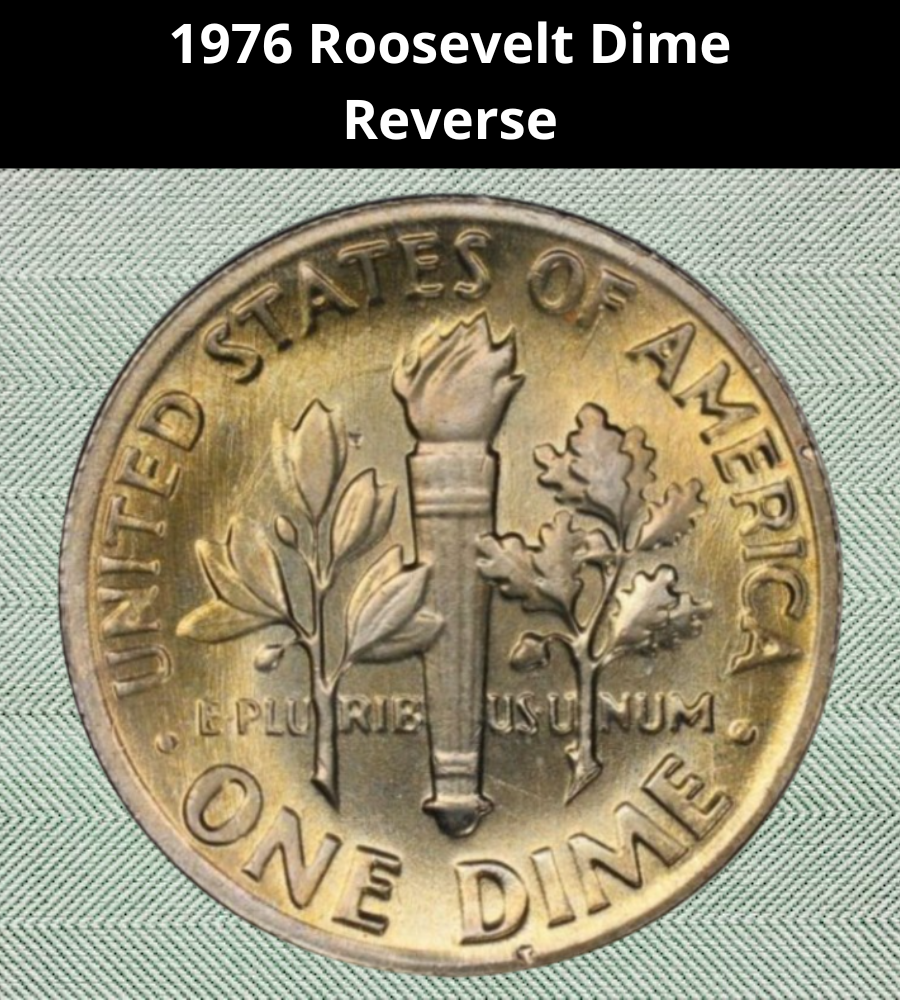
The reverse is more symbolic and visually balanced. At the center is a torch, representing liberty and enlightenment. It is flanked by two branches:
- An olive branch on the left, symbolizing peace in the postwar era.
- An oak branch on the right, representing strength, stability, and resilience.
Between the branches is the motto E·PLURIBUS·UNUM (“Out of many, one”), emphasizing national unity. The inscriptions UNITED STATES OF AMERICA and ONE DIME encircle the design, all set within a reeded edge.
1976 Roosevelt Dime Specifications
| Feature | Detail |
|---|---|
| Face Value | 10 cents ($0.10) |
| Diameter | 17.91 mm (0.705 in) |
| Weight | 2.268 g (0.08 oz) |
| Thickness | 1.35 mm (0.053 in) |
| Composition | Clad coin: pure copper core, outer layers of 75% copper and 25% nickel (overall 91.67% copper, 8.33% nickel) |
| Shape | Round |
| Edge | Reeded |
1976 Roosevelt Dime Grading Guides
| # | Grade |
|---|---|
| 1 | Basal State-1 |
| 2 | Fair |
| 3 | Very Fair |
| 4, 5, 6 | Good |
| 7, 8, 10 | Very Good |
| 12, 15 | Fine |
| 20, 30 | Very Fine |
| 40 | Extremely Fine |
| 50 | About Uncirculated |
| 60 | Mint State |
| 65 | Mint State |
| 70 | Mint State |
1976 Roosevelt Dime Value Guides
Three U.S. Mints struck Roosevelt dimes in 1976, producing a total of 1,268,132,504 coins. Philadelphia and Denver issued business strikes for circulation, while San Francisco produced proof coins for collectors.
1976 No Mint Mark Dime Value (Philadelphia)
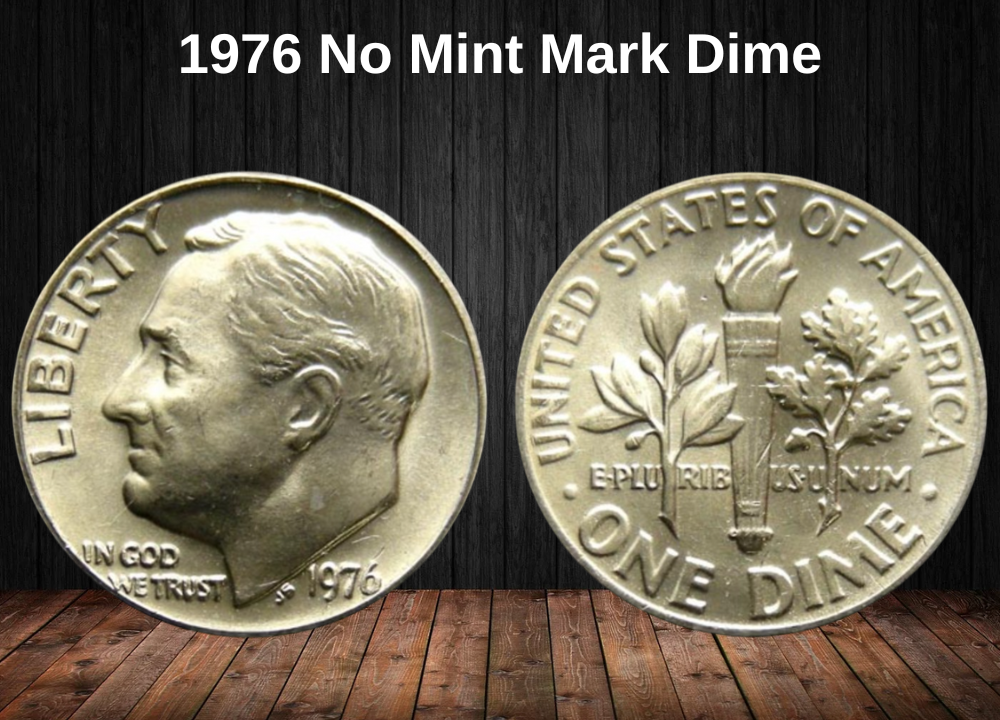
The Philadelphia Mint struck 568,760,000 dimes in 1976. Circulated examples are generally worth only face value (10¢), but uncirculated coins and those with strong details can bring premiums.
- MS 65 to MS 66: up to $32
- MS 67: around $200
Dimes with the desirable Full Bands (FB) designation on the reverse torch command much higher prices:
- MS 65 FB → ~$425
- MS 66 FB → ~$2,000
Auction Record: A 1976 FB dime graded MS 66 sold for $2,695. No MS 67 FB examples have surfaced at auction yet.
1976 D Roosevelt Dime Value (Denver)
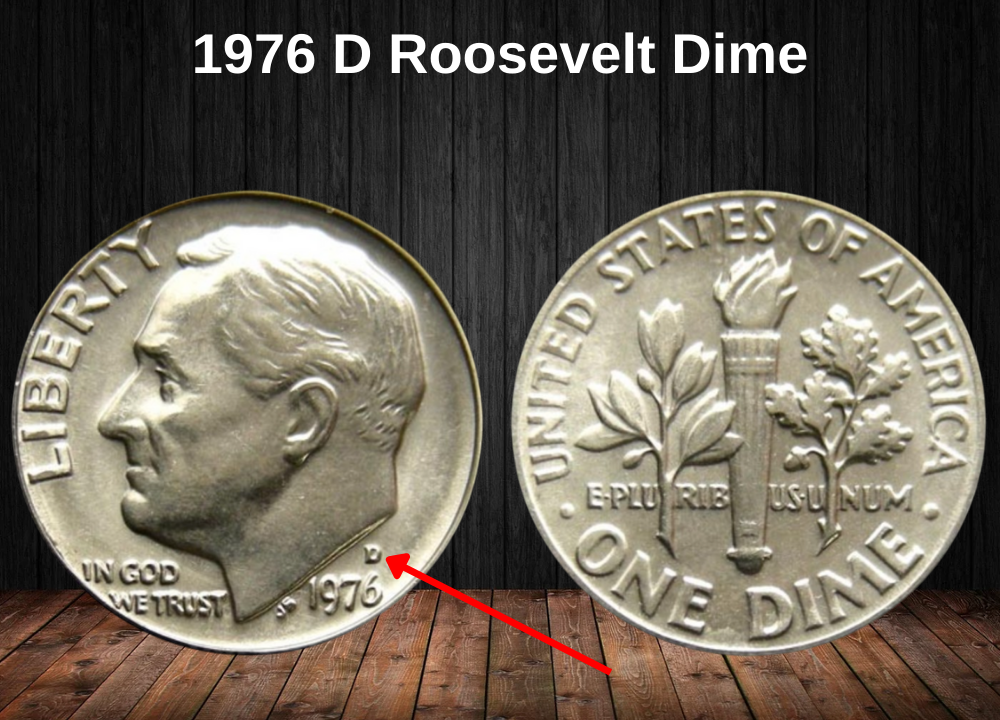
The Denver Mint produced an enormous 695,222,774 coins in 1976. Most remain common in circulation and are worth face value, but uncirculated pieces with strong strikes are more collectible.
- MS 67: around $37
- MS 68: estimated ~$450 (auction sales as low as $202 in 2022)
For Full Bands examples:
- MS 64 to MS 66 FB → $20 – $200
- MS 67 FB → up to $1,700
1976 S Roosevelt Dime Value (Proof, San Francisco)
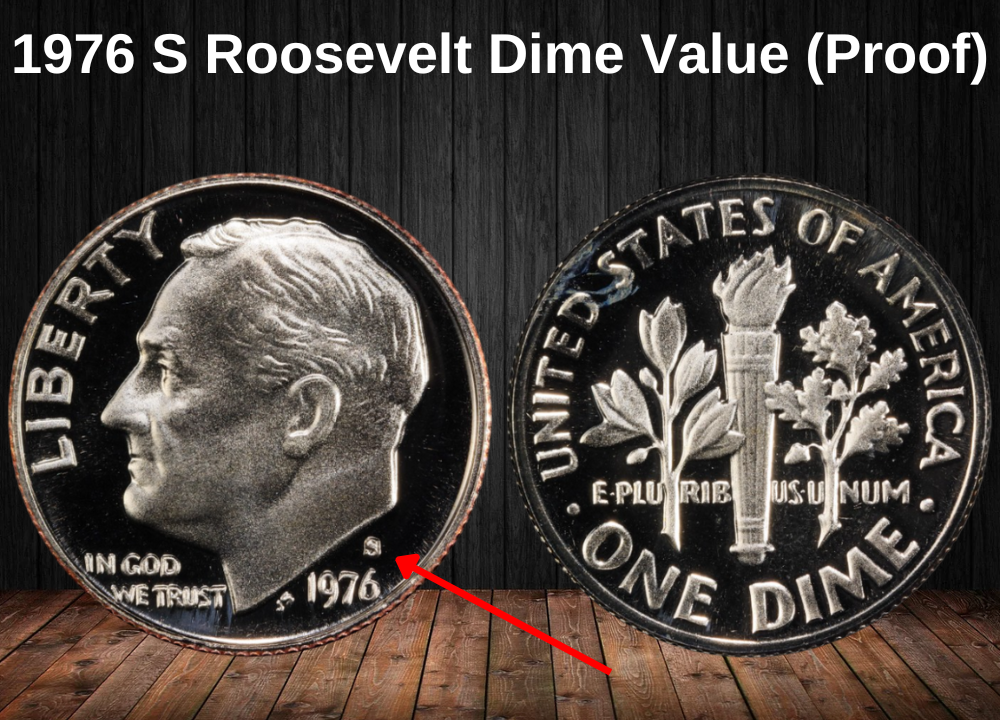
The San Francisco Mint struck 4,149,730 proof dimes in 1976, specifically for collectors. These are readily available but vary in value depending on cameo contrast and preservation.
- Standard Proofs: $0.25 – $1
- High-Grade Proofs (PR 68–PR 69): $2.50 – $6
- Deep Cameo (DCAM) Proofs are the most desirable.
Auction Record: A PR 70 DCAM sold for $1,035 in 2003.
Rare 1976 Roosevelt Dime Errors List
The high mintage of 1976 Roosevelt dimes means error varieties are not uncommon. While most flawed coins carry only small premiums, certain errors are more collectible and command higher prices. The most sought-after remain Full Bands (FB) examples, struck with sharp detail on the torch.
Blank Planchet
When a dime planchet bypasses the dies without being struck, the result is a completely blank piece. The only way to identify it as a dime is by its size and weight.
- Value: around $10
Clipped Planchet
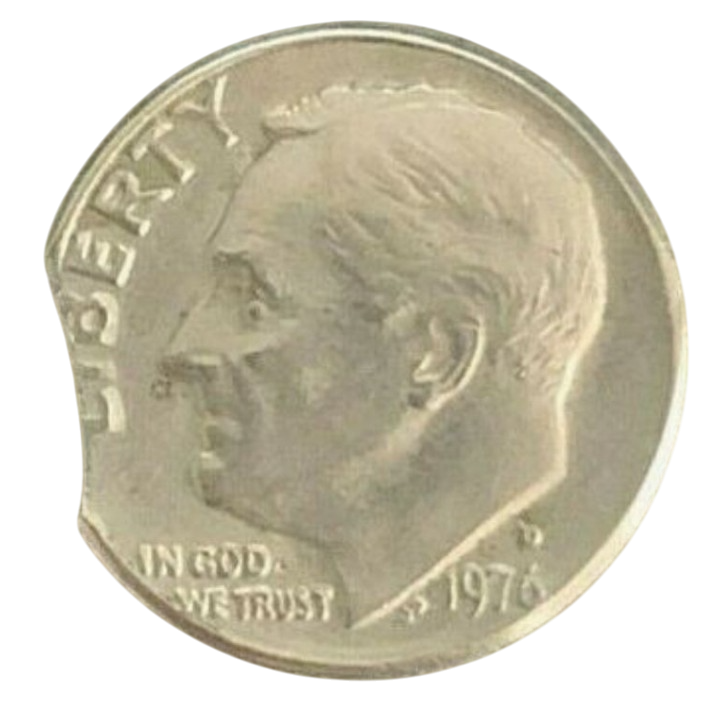
A clipped planchet occurs when a section of the metal blank is missing before striking. These errors are noticeable by their crescent-shaped cuts or straight clips.
- Value: $15 – $50, depending on size and position of the clip
Missing Clad Layer
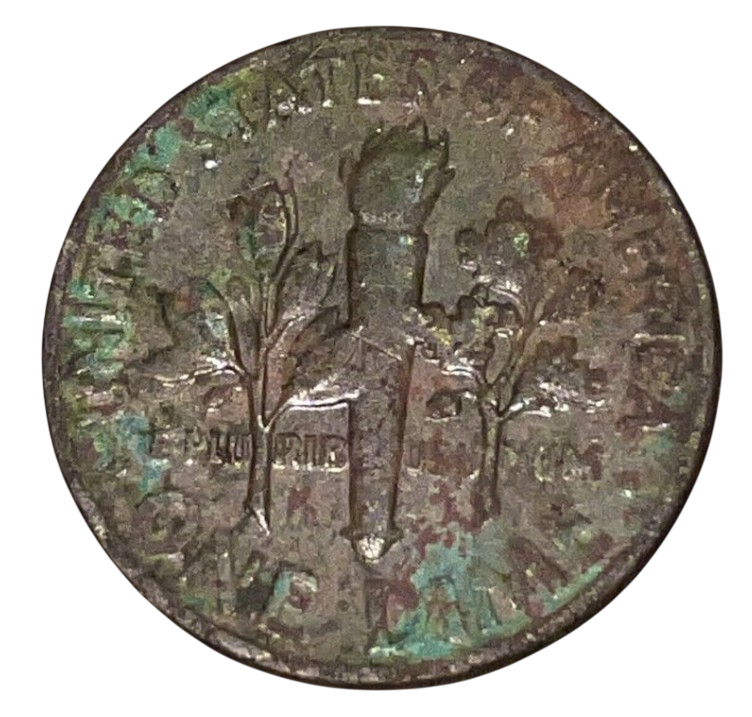
1976 dimes are composed of a copper core with an outer cupronickel layer. If the clad layer fails to bond, the coin will display its exposed copper core, giving it a reddish or rusty look.
- Value: $5 – $10
Broad Strike
A broad strike happens when the retaining collar malfunctions or breaks, causing the coin to spread out beyond normal dimensions. These coins are thinner, wider, and lack a reeded edge.
- Value: up to $45
Off-Center Strike
Improper die alignment can lead to an off-center design. While minor misalignments are common, most 1976 examples show only 10–15% off-center, which are moderately collectible.
- Value: up to $20
Where to Sell Your Dime Coin?
Now that you know the value of your dime, the next step is deciding where to sell it. There are several trusted options—both online and in person—that can help you get the best price depending on your coin’s rarity and condition.
To see the full list of recommended places, along with their advantages and disadvantages, check our complete guide on where to sell your dime coins.
FAQ about the 1976 Roosevelt Dime
What is the composition of the 1976 Roosevelt dime?
The 1976 Roosevelt dime is composed of a copper core (91.67%) with a cupronickel outer layer (8.33%). This clad composition replaced the 90% silver alloy used in earlier dimes before the Coinage Act of 1965.
Why doesn’t the 1976 dime have a Bicentennial design like quarters, half dollars, and dollars?
Although 1976 was America’s Bicentennial year, the dime and penny did not receive special dual-date designs. Only quarters, half dollars, and dollars were redesigned with the 1776–1976 dual date and patriotic reverses. Dimes retained their standard Roosevelt design.
How many 1976 Roosevelt dimes were minted?
A total of 1,268,132,504 dimes were struck in 1976:
- Philadelphia (No Mint Mark): 568,760,000
- Denver (“D”): 695,222,774
- San Francisco (“S” Proof): 4,149,730
What is the value of a regular 1976 Roosevelt dime?
Circulated 1976 dimes are worth face value (10¢). Mint State (MS) examples can range from $2 to $30 depending on grade, while top-graded coins with Full Bands strike on the reverse torch can be worth several hundred dollars.
What are “Full Bands” on a 1976 Roosevelt dime?
Full Bands (FB) refer to complete horizontal separation lines on the torch located on the reverse. These indicate a strong, well-executed strike. Collectors pay a premium for FB coins, with values reaching over $2,000 in MS 66.
Are there any rare 1976 Roosevelt dime errors?
Yes. Popular errors include blank planchets, clipped planchets, missing clad layers, broad strikes, and off-center strikes. Values range from $5 to $50, though coins with dramatic errors or strong FB designations can be worth more.
What is the most valuable 1976 Roosevelt dime ever sold?
The auction record for a 1976 No Mint Mark Roosevelt dime with Full Bands in MS 66 is $2,695. Proof coins from San Francisco, particularly in PR70 Deep Cameo (DCAM), have also sold for over $1,000.

